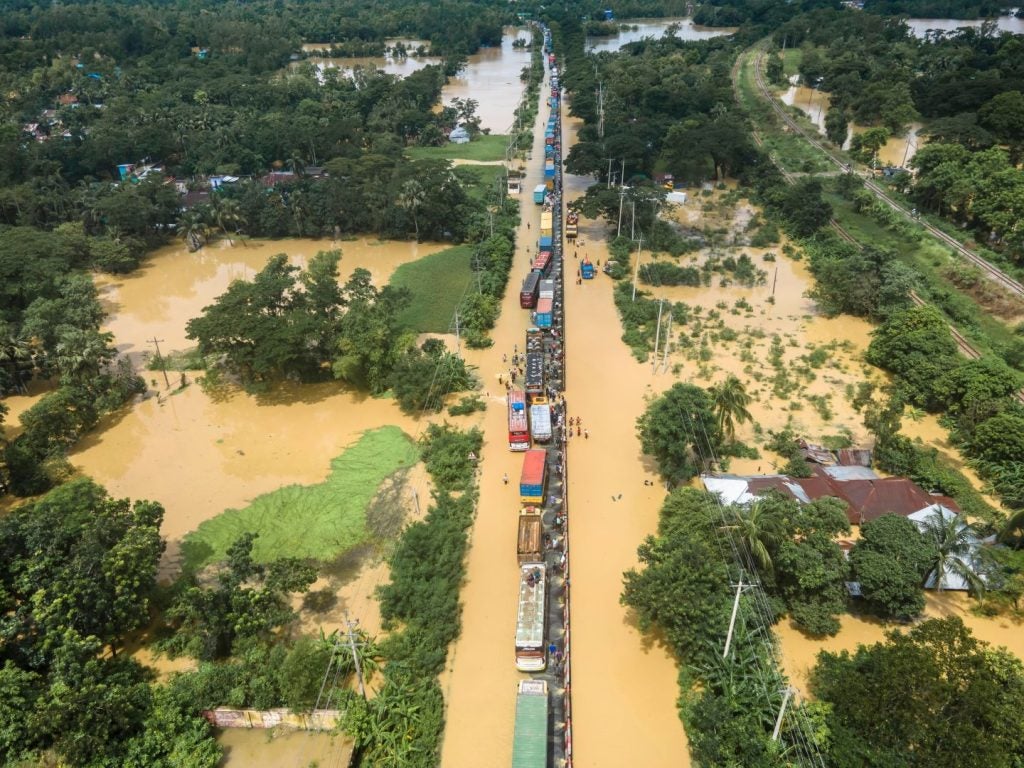As congestion surges in Bangladesh’s main port for apparel trading, Chittagong, the CEO of Beacon, a provider of supply chain visibility software, tells Just Style the long-term implications won’t be far-reaching and it would be advisable for brands and retailers to stick with their current suppliers and weather the storm as he believes it will pass.
According to supply chain visibility software company Beacon, brands and retailers in Europe and North America could suffer some turbulence during the Q4 period related to an order back up in Bangladesh’s main port, Chitangong, that has resulted from political unrest and catastrophic flooding in the country.
Citing publications including Splash247 which said in early August, following the sudden departure of prime minister Sheikh Hasina, 50 ships were waiting to berth at Chittagong and The Loadstar which said the flooding of the Dhaka-Chittagong highway caused trucks to be stranded in traffic jams stretching up to 40km.
Beacon points out the port is a critical node in the global apparel industry.
As a result of these dual crises, Mohawk Global reported that inland container depots have been overwhelmed, with some holding double the usual volume of containers. To help alleviate the pressure, the port has implemented 24/7 operations.
The latest updates to Beacon’s Port Congestion Index reflect the scale of the disruption in Chittagong.
Average anchor times, which represent the duration vessels wait to berth, surged 77% from 2.2 days (53 hours) in July to 3.9 days (94 hours) in August. This marks a steady increase from 1.2 days (29 hours) in June and 1.0 days (24 hours) in May, and far exceeds the average waiting time of 0.8 days (19 hours) recorded across the first half of the year.
While berth (unloading and loading) times remained relatively stable month-on-month (3.1 days in August vs. 3.0 days in July), they were still significantly above the H1 average of 2.6 days.
On the ground, the difficulty in moving containers in and out of the port is evidenced by container dwell times more than doubling on a month-over-month basis, from an average of 6.0 days in July to 12.7 days in August.
What this means for the apparel industry
For apparel importers, these delays are a serious cause for concern.
Bangladesh is one of the world's leading exporters of ready-made garments, and any disruption to its logistics infrastructure will undoubtedly have an impact on the availability of apparel in the North American and European markets that depend on it heading into the holiday shopping season.
The fact that disruptions have extended to the air freight sector means many importers are left with little choice but to endure the delays and hope that the deployment of additional vessels by Maersk and other carriers helps accelerate the return to normal operations and minimise delays.
This latest crisis is a stark reminder that reliance on distant production hubs comes with inherent risks that must be carefully managed, particularly in an era of escalating geopolitical tensions and extreme weather events caused by a changing climate.
It serves as the latest lesson for apparel companies as it relates to the vulnerability of their supply networks, and is likely to cause many to reassess their supply chain strategies and accelerate the nearshoring trend that is already in motion.
What about air freight options?
Beacon says those looking to air freight as an alternative to the port disruption in Bangladesh “may be left disappointed” as a shortage of storage space at air cargo facilities and an insufficient number of cargo flights have led to rising air freight rates out of the country.
Further, Fraser Robinson CEO of Beacon, tells Just Style: "Port congestion often leads to rising freight rates, adding pressure to retailers' costs. When ocean shipping is disrupted, we have noticed that many retailers turn to air freight for faster delivery. However, air freight is typically at least five times more expensive than ocean freight, which can significantly cut into retailers' margins. Whether these increased costs will be passed on to consumers remains to be seen."
When will balance be restored?
Robinson says weather events have an “acute but recoverable effect”, and protests are “no longer disrupting day-to-day port operations.
"We expect the impact of these events to be relatively short-term. However, the timing of these disruptions is critical, as retailers are stocking up for the busy Q4 period. Currently, our data shows ocean transit times are averaging about a month from Bangladesh to the US West Coast and 35 to 40 days to Europe. With the majority of holiday spending occurring in November and December, there is hope for retailers if the backlog can be cleared quickly."









